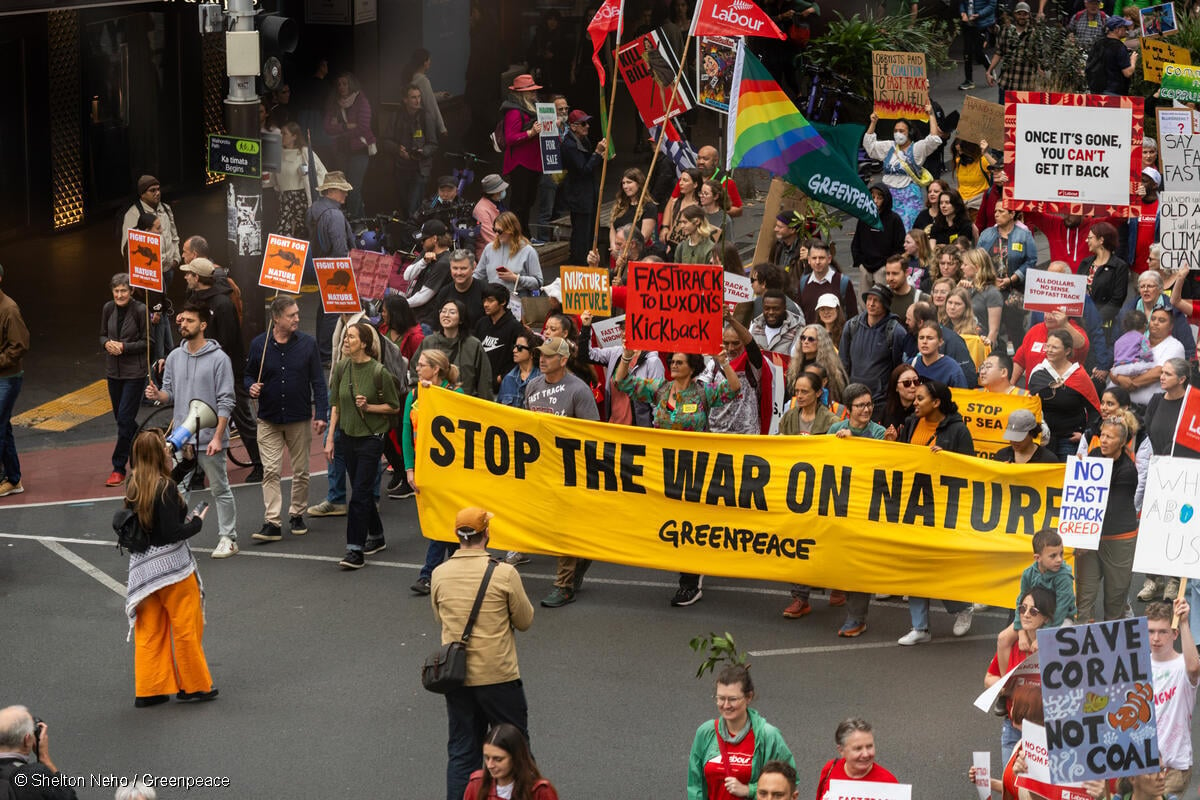What is methane, you ask? Some of us associate methane with cow farts and burps, and indeed a large chunk of methane emissions come from animal farming, cow dung and digestion.
That’s why on October 9th, 2024, we scaled the Fonterra dairy milk processing factory in Te Rapa, Waikato and hung a giant banner reading ‘Fonterra’s methane cooks the climate’.
Methane is a big problem, but it’s also a huge opportunity.
Methane is the often ignored greenhouse gas we need to pay far more attention to
A potent greenhouse gas, methane is 80 times more powerful than carbon dioxide (CO2 ) over a 20 year period. The concentration of methane in the atmosphere is nearly three times higher than it was during the pre-industrial era, and emissions are rising faster than ever.
While carbon dioxide is a well-known greenhouse gas that lingers in the atmosphere for centuries, methane’s lifespan is shorter. It disappears from the atmosphere in only 12 years if we do not continue emitting it. But during that time, it heats up our planet faster than other gases. This does a lot of damage to our climate.
The main source of methane is cows’ burps. Cows produce methane when they eat grass and break it down in their stomachs. This gas is then released when the cows burp. And a cow may burp every 90 seconds, which is a lot!
Here in Aotearoa, there are millions of dairy cows – more cows than there are people. The last estimate was 10 million cows, with around 6.1 million of them dairy cows and 3.9 million beef cattle. Those cows release large amounts of superheating methane gas. They produce so much methane that agriculture, particularly the dairy industry, is New Zealand’s biggest source of climate pollution.
Methane is also produced from large quantities of cow, pig and chicken manure. The more of these animals in one place, the more manure, and the more climate pollution.
Given the global scale of industrial meat and dairy production, emissions from the agriculture sector are substantial. They represent a huge problem for the climate and for all of us.
Reducing methane emissions: a win-win for animals, people and the climate
A number of big companies drive global meat and dairy production, and it keeps increasing. Reducing meat and dairy production is a crucial step in mitigating methane emissions, and limiting global heating. The most effective way to do that is to significantly reduce the number of animals that are fed into the industrial machine and transition to a far better system for us, the animals and the planet.
Addressing methane emissions can slow down warming to combat catastrophic climate change. So we need to cut methane from both Big Meat and Dairy and Big Oil. While reducing methane emissions can slow down heating, it’s also essential to phase out CO2 emissions, largely from fossil fuel use, to deal with climate chaos and stabilize the climate.
Industrial meat and dairy are leaving a trail of destruction across the planet and contributing heavily to the climate crisis, with methane emissions being a significant part of the problem.
Right now people are dealing with the impacts of Hurricane Milton in the US, while here in Aotearoa some communities are still recovering after the Auckland Anniversary Day deluge, Cyclone Hale and Cyclone Gabrielle, which all hit within a three-month period in early 2023.
Drastically reducing the production and consumption of industrial meat and dairy — especially in wealthy, meat-eating countries — and putting an end to the cruel and environmentally destructive intensive livestock industry is more urgent than ever. It’s time to slow down warming by turning up the heat on big meat and dairy.

We’re demanding that Fonterra end their use of palm kernel expeller as imported feed, to cut methane emissions from the dairy herd.
Add your name!


